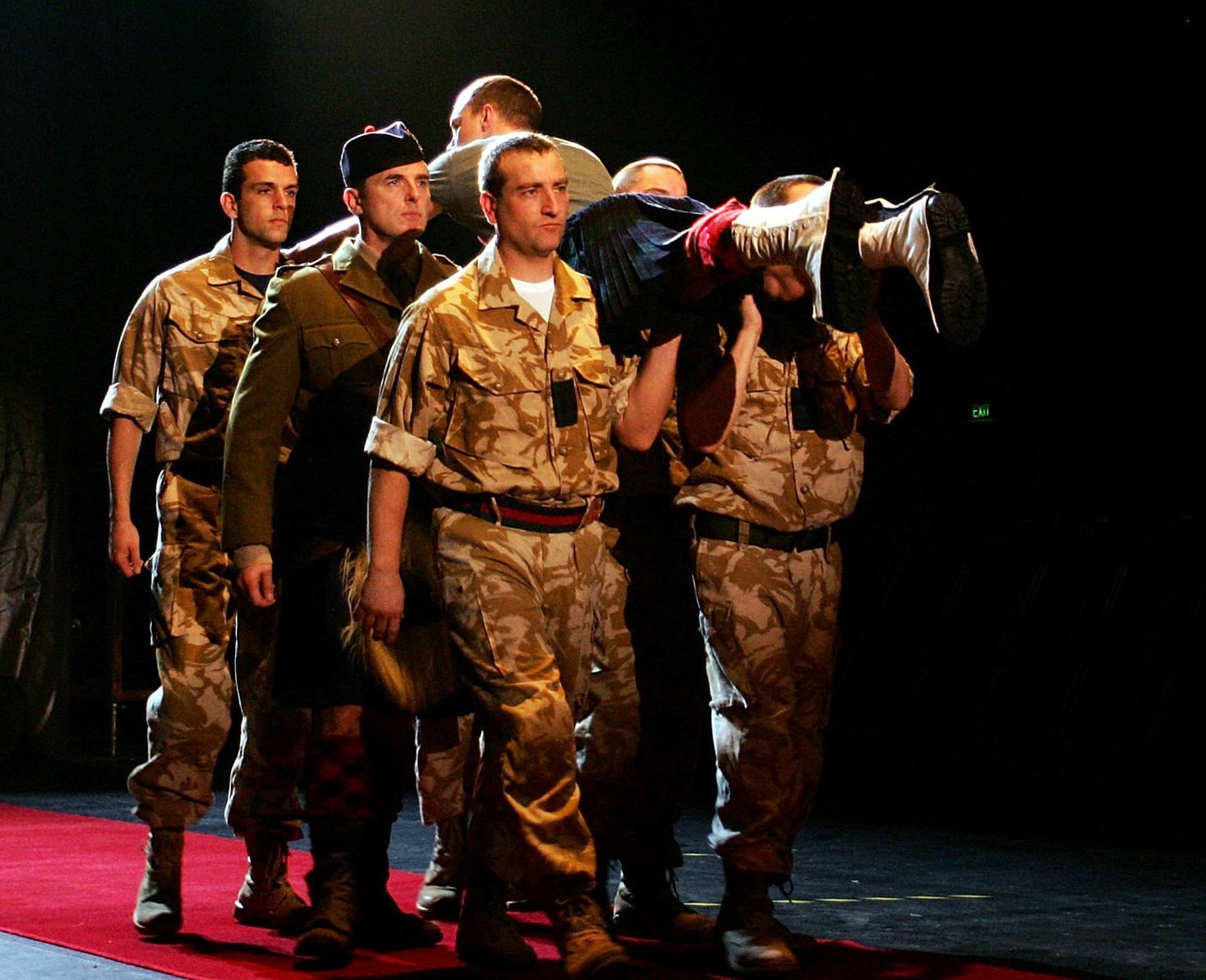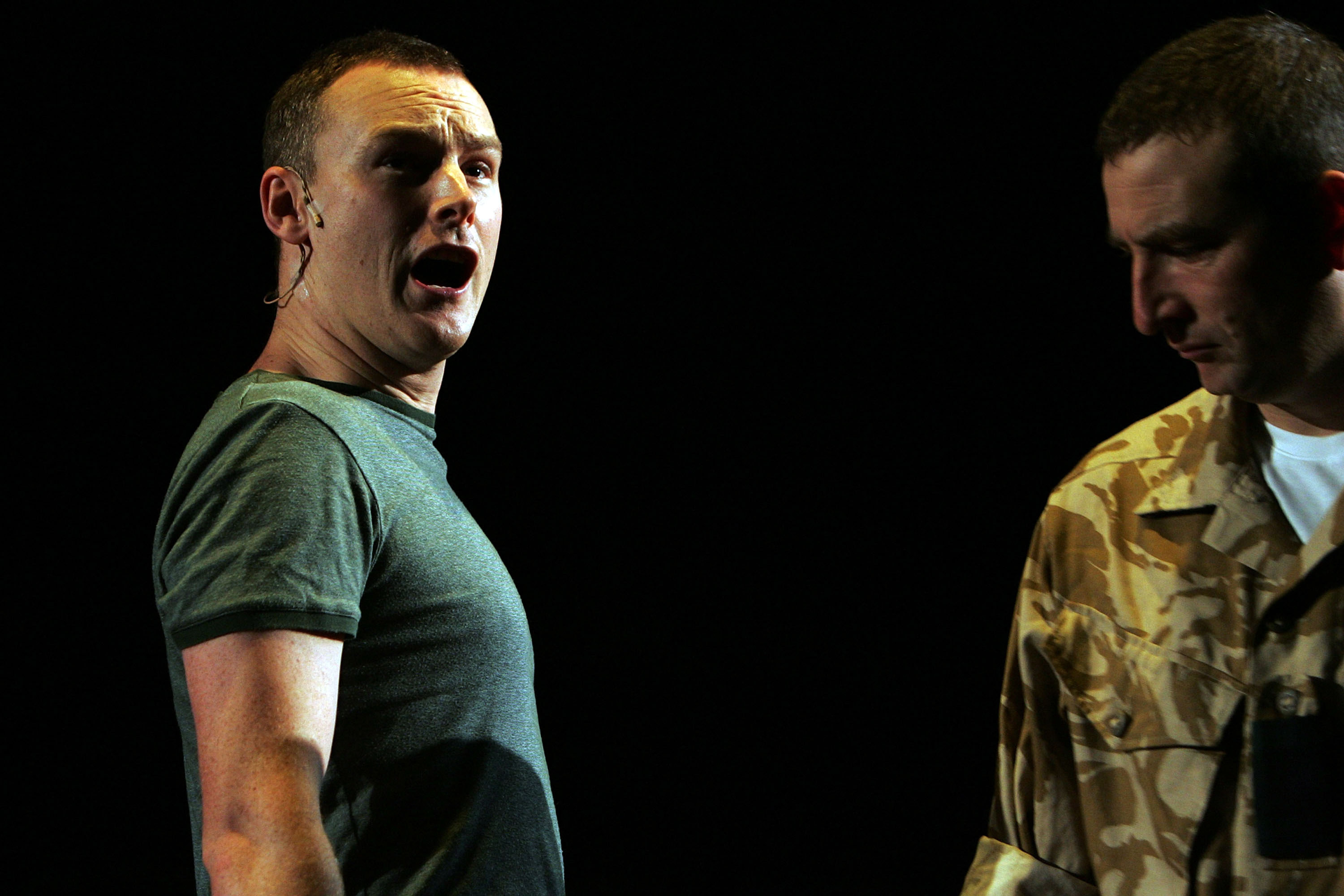
IT has become one of Scotland’s greatest theatre hits – sweeping across four continents and playing to more than a quarter of a million people.
This month marks the tenth anniversary of Black Watch, one of Scotland’s most celebrated stage plays.
Fife-born writer Gregory Burke based the National Theatre of Scotland play on the experiences of hardened ex-squaddies who had served on the front line in Iraq with the legendary regiment.
He interviewed veterans of the bloody conflict – telling their personal stories through actors, using the soldiers’ own words.
But why has it become so popular? Roberta Doyle, a director of the NTS, suggested the “hyper local” play’s lasting appeal lay in its numerous references to the Black Watch’s traditional recruiting grounds.
She said: “The source material was so authentic and so resolutely Scottish.”
Despite the tough subject matter the play contained a positive message, she said.
“It is about a message of friendship – that they fight not for their country but for their mates,” she added. “That seems to be the universal message that audiences across the world have taken away.”
The multi-award-winning play, directed by John Tiffany, took the world by storm after its first performance at the Edinburgh Festival in 2006, becoming so popular it toured the US the following year.
Hollywood glitterati queued up to offer endorsements and the play won four prestigious Olivier Awards.
Then there were sold-out runs in New York and five-star reviews from Sydney to Chicago.
Doyle said: “In New York, we had cadets from West Point Academy and they were amazed by it.
“When we were in Aberdeen, the current Black Watch came from Fort George in uniform.
“There were about 120 of them in their tam o’ shanters and red hackles. It was an extraordinary sight.”
Black Watch follows the lives of a Scottish battle group deployed to the lawless Iraqi province of North Babil to support American troops during the Battle of Fallujah in 2004.
The production makes powerful use of flashbacks, choreography, haunting music and film footage to bring the soldiers’ memories to life, as they play pool and chat to a writer in a Fife bar.
Doyle said the play became a phenomenon because of the audience’s reaction, while it earned the description “rock ‘n roll theatre”.
“It was something very immersive,” she said. “The sounds of mortars going off overhead and of helicopters taking off. It was completely authentic.”
Tearful mothers whose sons never returned from Iraq were among those watching at Rothes Hall in Glenrothes in 2008.
John Tiffany, who is currently directing Harry Potter and the Cursed Child in London’s West End, described a meeting with them after the performance as one he would never forget.
“That was a real privilege,” he said.
“And seeing how the audience in Sydney responded in the same way as a Scottish one, realising it could transcend geographical boundaries. That was a wonderful feeling.”
READ MORE
The Black Watch itinerary ports of history and beauty
Enjoy a ship of delights with a cruise aboard Fred Olsen’s Black Watch

Enjoy the convenience of having The Sunday Post delivered as a digital ePaper straight to your smartphone, tablet or computer.
Subscribe for only £5.49 a month and enjoy all the benefits of the printed paper as a digital replica.
Subscribe